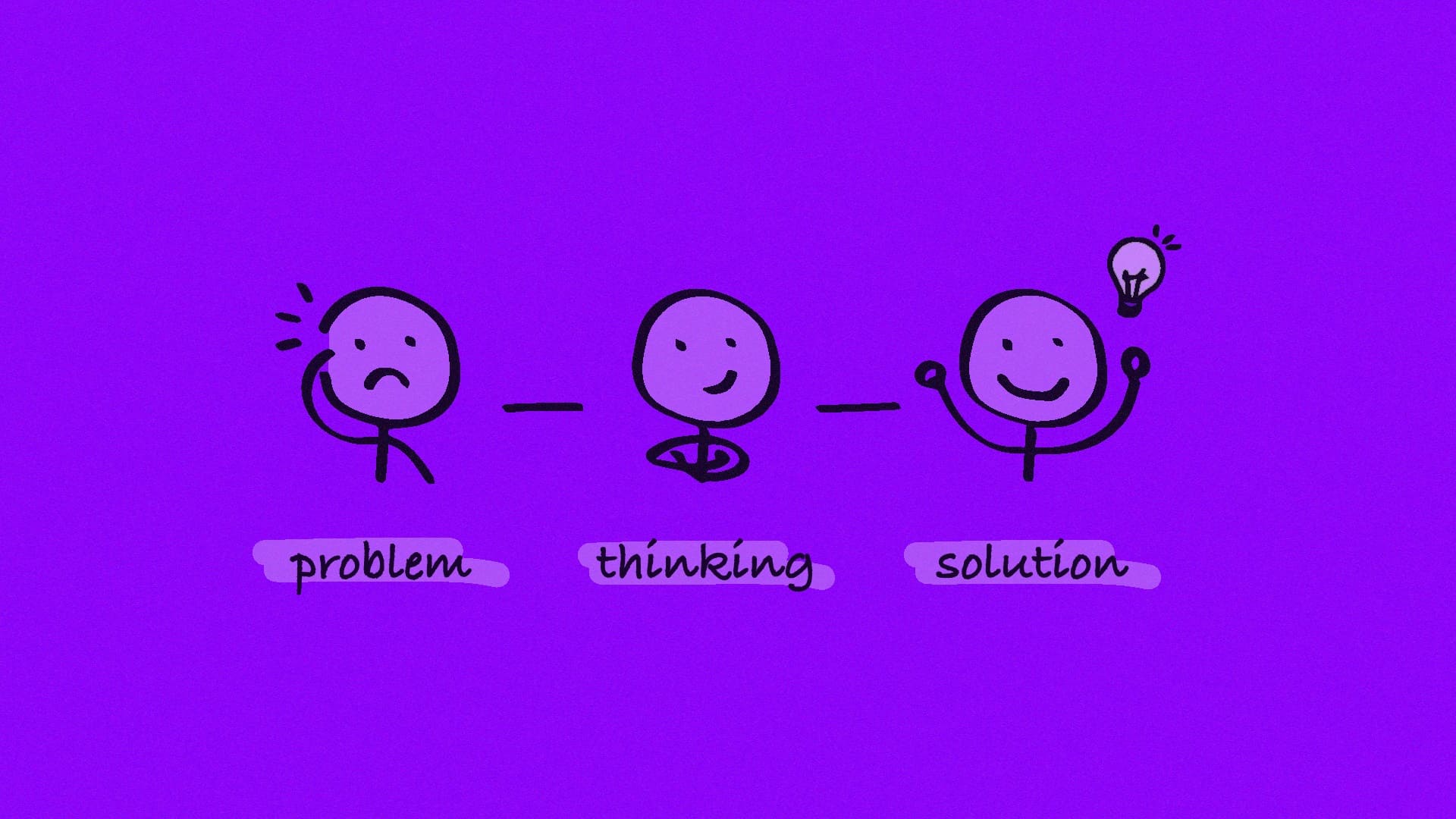"Innovation is taking two things that exist and putting them together in a new way." — Tom Freston, co-founder of MTV
But, innovation is NOT easy. Not everyone can brew up an idea out of thin air and change industries. We have all read about how Elon Musk, Jeff Bezos, and other innovators have transformed their individual industries.
But, the question is — how did they pull off this sorcery? And, can you do it too?
Well, YES! All innovators are famous for using First Principles thinking to solve important problems. But, what is First Principles thinking? And, how do these brilliant innovators use it? In this article, I'll cover just that. Let's get into it!
What exactly is First Principles thinking?
At its very core, First Principles thinking is all about doing this ⇒ Find what are you absolutely sure is true & proven and buildd your solution on top of it.
Here's how this is different from the traditional way of thinking
Traditional Thinking
Step 1 ⇒ Start with the existing solution to the problem
Step 2 ⇒ Iterate and explore on top of the existing solution
Step 3 ⇒ Explore existing knowledge sources or external wisdom to tackle the problem
Step 4 ⇒ Create a solution that's a moderate improvement on the existing solution.
First Principles Thinking
Step 1 ⇒ Define the problem you want to solve
Step 2 ⇒ Breakdown the system into its most fundamental parts
Step 3 ⇒ These fundamental parts now point to many possibilities and are open for experimentation. So, the next step is to explore and experiment.
Step 4 ⇒ After exploration, create something new that solves a problem
Let's take a very simple example of Mayonnaise to understand this. We know mayo is an emulsion blend of oil and water. If suppose you want to make spicy mayo, you can do it 2 ways
- Traditional Thinking ⇒ Take hot sauce and mix it with plain mayo
- First Principles Thinking ⇒ Take the fundamental parts of Mayo i.e oil & eggs, add chillies (or other spices) and blend them together to form the emulsion.
So, with the First Principles approach, you can explore a solution with endless ingredients because the fundamentals are known. The biggest power of First Principles thinking is its ability to help you think for yourself instead of following all the expert proxies out there.
But, how does this strategy of reasoning look when implemented? Let's dive into some examples to understand this more clearly!
Example 1: How Musk used First Principles to buildd SpaceX
The poster child and most staunch advocate of first principles thinking is Elon Musk. So, let's get the most talked about, SpaceX example, out of the way first.
In 2002, when Musk first conceptualized his plan to send rockets to Mars, he went searching for the said rockets to Russia. His plan was to buy 3 Russian ICBMs (intercontinental ballistic missiles) so they can get on with their Mars mission.
But, there was a big hurdle. The cost of purchasing one rocket was $8 million dollars at that time. That would mean up to ~$25 million dollars for the 3 rockets that Musk needed. That was an astronomically high price for an up-and-coming space startup.
So, during the return flight, Musk got to work. He approached the problem from the first principles. Here's how he explains the process:[1]
"So I said, okay, let’s look at the first principles. What is a rocket made of? Aerospace-grade aluminium alloys, plus some titanium, copper, and carbon fibre. Then I asked, what is the value of those materials on the commodity market? It turned out that the materials cost of a rocket was around two per cent of the typical price."
With this information, instead of spending millions on finished rockets, he decided to buildd his own rocket company. Now, don't get me wrong. Building a commercial space startup in 2002 was no walk in the park. Musk and the team had many failures, and epic crashes and they went almost bust several times.
But today, SpaceX is one of the most valued startups ($140 billion dollars valuation) out there, all thanks to Musk's approach of first principles thinking!
Example 2: Why Bezos started selling books online
An important component of first principles thinking is the idea of consciously favouring first principles over analogy. Now, what does this exactly mean?
Well, you see, an analogy is when you compare a system with another system to point out marginal similarities between them. When you develop something through analogy, you only think of marginally improving an existing system rather than tackling the core problems with it.
Henry Ford, CEO of Ford Motors, described it perfectly — "If I had asked the public what they wanted, they would have said a faster horse (instead of a car!)"
Jeff Bezos, back in 1994, had a similar choice. While working at a hedge fund, Bezos realized that internet usage was increasing by 2000% every year. He needed to get into the WWW action. So, he decided to sell books on Amazon.com!
Now, he could either land on the analogy approach or take the first principles approach. Let's explore them both!
Marginally improving on an analogy ⇒ Here Bezos could have started a physical bookstore holding book inventory in a storage facility and used the internet to reach more users. So, essentially, he would only slightly improve the traditional bookstore model by adding the "selling online" component to it.
But, instead, he did something very different!
Thinking from First Principles ⇒ Bezos identified that there were 2 fundamental problems limiting the profitability of these physical bookstores:
- Inventory cost
- And, the fact that these bookstores only sold bestsellers, as it was impossible to hold all books in any one store
Amazon's model solves both of these problems. It was able to sell ALL books on the platform without holding any inventory. It just worked as a connecting tool between the book vendors and the end users.
With this model, Amazon's growth potential became essentially endless. And, its trillion-dollar market value is a huge testament to that.
Example 3: Doordash's approach to profitability
Another great example of thinking from first principles is DoorDash's strategy which made it profitable!
DoorDash was founded in 2013 when big competitors like Uber were already ruling the market. These big startups had captured a significant market in the big cities and they had huge access to capital.
Now, any VCs would suggest DoorDash to:
a) stay in cities where the concentration of the market is huge
b) and, raise a lot of capital to rival its big competitors
But, this strategy is intrinsically flawed. When 2 startups are competing on a level playing field, the one that showed up first has a better chance of winning because of its established brand and deep pockets. In this particular case, Uber, in fact, had a 50x marketing budget as that of DooDash.
After some contemplation, DoorDash's early team realised this. They knew they couldn't magically change this situation. So, they took a different route.
Instead of moving to cities, they moved to suburbs. The landscape there was not as competitive which helped DoorDash thrive and become profitable! Later, their profits helped them enter the cities. So, the whole thing was a win-win situation!
Example 4: Zerodha's cue to revolutionise stock broking in India
Function over Form is another way First Principles manifest. Let me explain more! Instead of replicating the form of an already present business model (by analogy), first-principle thinking pushes you to think of the function of the business.
Zerodha is a very good example of focusing on function over form!
In 2008, when Nithin Kamath was buildd-ing on Zerodha, the idea was to bring stockbroking online. Back then, traditional stock brokers in India operated mostly offline, behind a thick veil of complex systems. Traders could just place their bets with the platform and stock brokers processed the rest.
These problems could be easily remedied by an online platform, but what flipped the script for Zerodha was their solution for the brokerage fee problem.
Traditional brokers operated on a percentage brokerage fee model, so they charged x% per trade. This was justified as their operating cost changed based on the trade value. So, their brokerage fee increased as the trade value increased.
Now, as Zerodha was operating online, their operating cost was completely independent of the trade value. So, instead of going for a percentage model, they switched to a flat brokerage fee of Rs 20!
You can imagine how this change alone would have had traders flooding Zerodha! Most of these day traders bet lakhs of rupees every day. A flat fee model would largely affect their end-day profits.
So, instead of just adding the online component to stock broking, i.e. improving form, Zerodha focused on the function of stockbroking and improved on that. And, to improve on that, it needed to rely on first principles — that is the independence of operating cost on trade value (in this case)!
Example 5: Mike McCue's way out of a big crisis with First Principles
Now, first principles thinking not only helps in conceptualizing innovative ideas, but it also helps when you are in crisis and need to make life-saving decisions.
Mike McCue founded Tellme Networks, a telephone-based application startup in 1999. Early on, Tellme had successfully bagged big clients like AT&T, Merril Lynch, American Airlines and FedEx.
But, the startup caught the attention of AT&T, their single largest customer and early investor. AT&T gave them an ultimatum — either play ball and licence Tellme's product to AT&T or get ready to directly compete with AT&T.
Their acquisition offer was super enticing. It came with a large upfront payment and revenue commitment that would swing their loss-making startup to profitability. But, the acquisition would require them to change their business model.
When the decision was to be made, Mike was outnumbered, with most of the team in favour of taking the offer. It was an obvious choice because competing with a giant like AT&T would be deadly for a small startup like them. Plus, the profitability incentive!
Tensions were high in the room and there was a decision to be made. So, Mike decided to look at things from the first principles.
He asked his team "What do we know to be true?"[2]
Question 1 ⇒ “What do we know to be true here? For example, can we not change the business model and be both a cloud provider and a software provider?”
Answer ⇒ "No, we can’t be both. It would be foolhardy to try and run a cloud service while also trying to be a world-class software provider"
Question 2 ⇒ “Assuming we opt to go with this deal, how long will we need to operate our cloud service for our current customers while we build the software for AT&T?”
Answer ⇒ "It would likely take two years or more to complete the transition. That would mean being both a cloud service and a software provider for at least two years, an eternity for a startup. See first principle No. 1."
Question 3 ⇒ “Assuming we elect to compete with AT&T, when could they match our accuracy levels?”
Answer ⇒ Even if AT&T could match our software, it would take years more of daily tuning to match our accuracy levels. For the foreseeable future, no customer would be able to financially justify running on AT&T instead of Tellme… not even AT&T.
Just answering the first 2 questions, it was clear that transitioning was already not a feasible option in spite of the attractive offer. And, when they answered the 3rd question, competing with AT&T didn't seem all that daunting!
The decision was made, they were rejecting AT&T's offer.
In the long term, this worked out, AT&T failed to buildd a competitive service to Tellme and later became one of their die-hard clients! So, again, a win-win!







